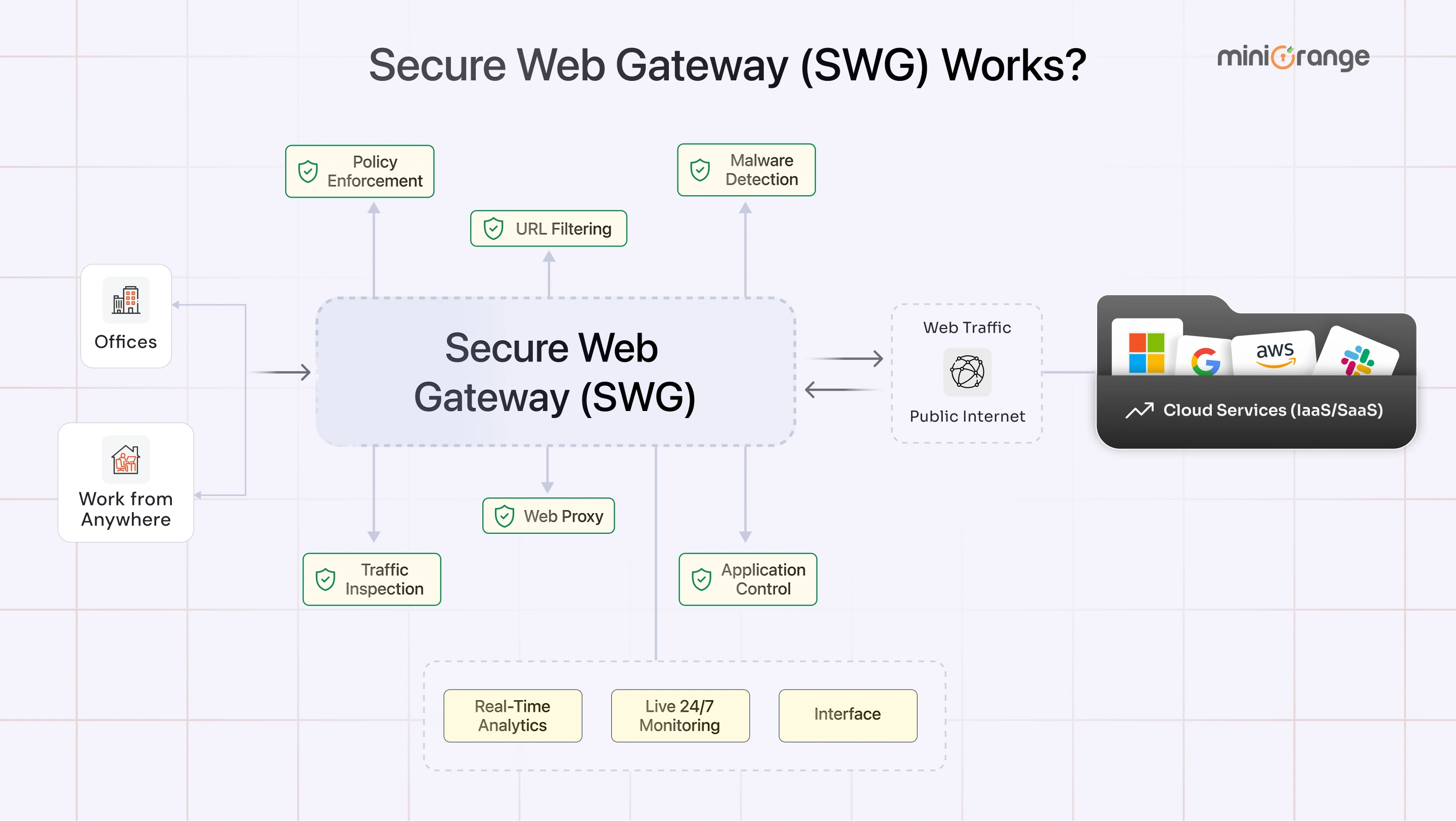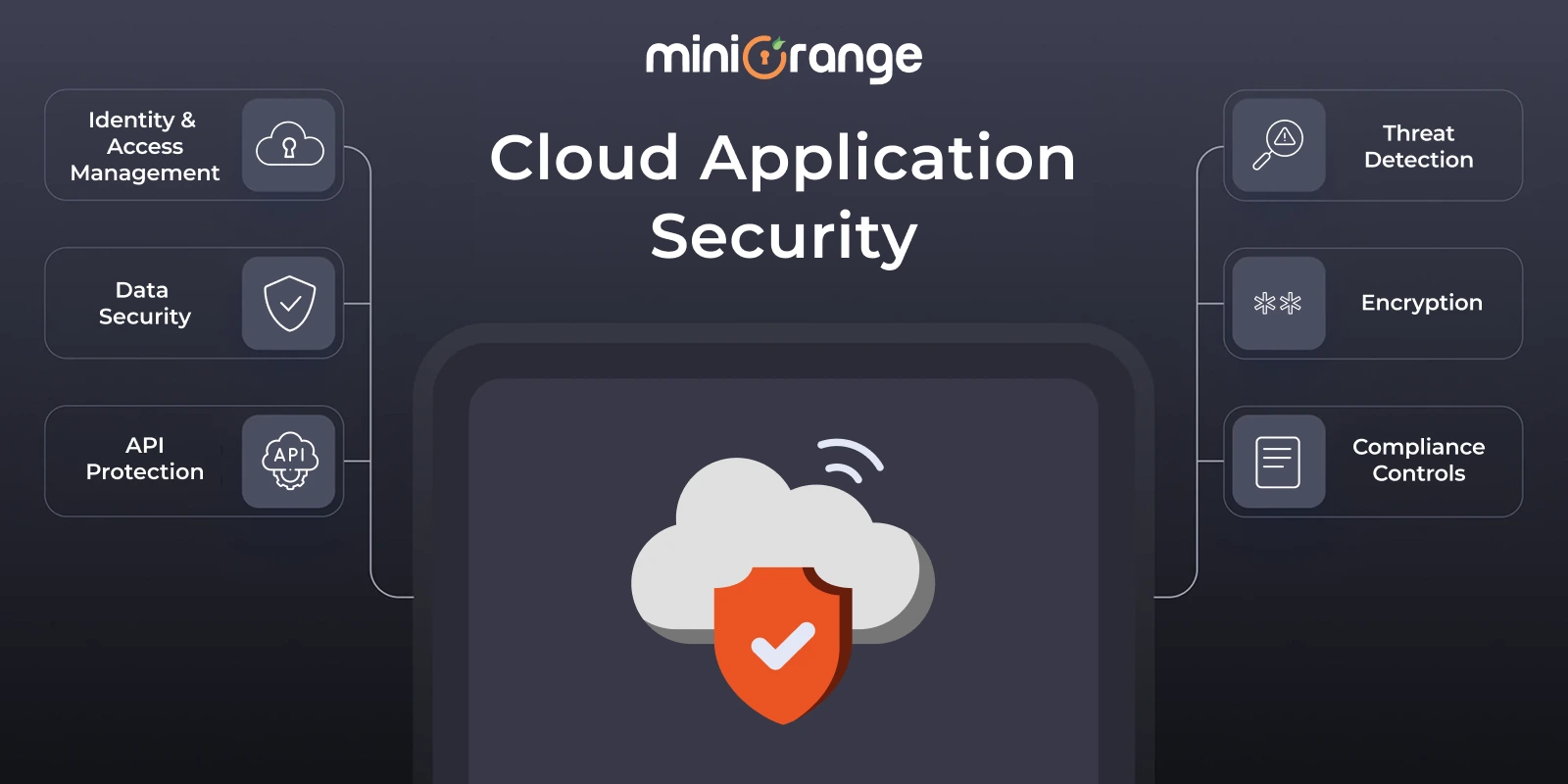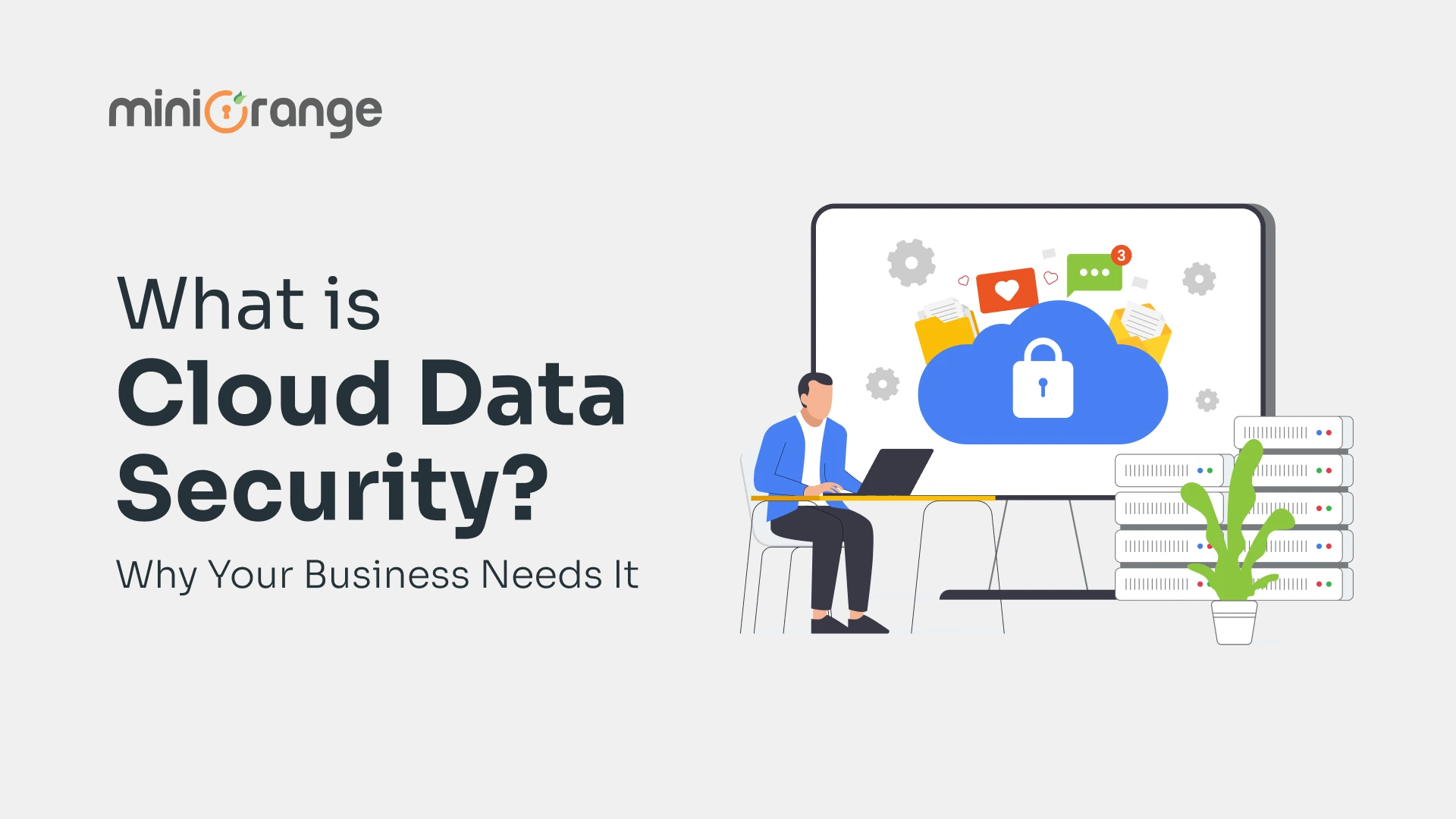As more businesses shift to the cloud and employees embrace hybrid work for its flexibility, the amount of data flowing through cloud applications has grown significantly. This shift has introduced broader and more sophisticated attacks that businesses must address to remain secure and operational.
To keep things safe, companies are turning to tools like Secure Web Gateways (SWG) and Firewalls. They might sound like they do the same thing, but they’re actually built for different jobs. Knowing the differences between SWG and firewalls is super important if you want a security setup that actually works.
Let’s break down Secure Web Gateway vs. Firewall, what they are, how they work, and why they matter for modern businesses.
What is a Secure Web Gateway (SWG)?
A Secure Web Gateway is a cloud-based cybersecurity solution that monitors and filters both inbound and outbound web traffic coming to your devices. It blocks malware, prevents data leaks, and imposes safe browsing compliance policies.
What Does an SWG Actually Do?
Here’s what a Secure Web Gateway helps your business with:
1) Real-Time Threat & URL Protection
Every time someone clicks a link, downloads a file, or opens a webpage, the SWG instantly inspects that activity in real time using URL filtering and blocks it if found malicious or against the set security policies.
2) Identity-Aware Policy Enforcement & User Control
Sometimes, suspicious user behavior happens inside your company. An SWG outperforms a firewall by helping you set and enforce identity-aware policies like blocking access to social media during work hours and setting browsing rules based on user role, network IP, department, or device type.
3) Cloud & SaaS Security (Shadow IT Control)
With employees using tools like Google Drive, Slack, or Salesforce, traditional firewalls can’t see everything happening in the cloud. An SWG bridges that gap by detecting and blocking “shadow IT” activities and allowing safe access to verified SaaS platforms.
Pros and Cons of Secure Web Gateways
Here are the main advantages & disadvantages of using the SWG solution.
Pros
- SWG gives you full visibility and control over all web traffic (HTTP/HTTPS).
- It detects and blocks malware, ransomware, & phishing attacks before they reach your endpoint devices.
- Let you set rules based on user identity, role, or device type.
- Prevents business data from leaving your network.
- Scales easily for remote or hybrid workforces.
Cons
- Only covers web traffic (not DNS, SSH, or RDP)
- HTTPS inspection adds processing load if not tuned properly.
- May require integration with firewalls.
How Does an SWG Work?
Here’s a simple step-by-step view of how an SWG protects your traffic:

Step 1: A User Initiates a Request
An employee tries to open a website, download a file, or access a cloud app. Before the request goes anywhere, it’s automatically routed through the Secure Web Gateway.
Step 2: The SWG Intercepts and Analyzes the Request
The SWG captures the traffic in real time and examines details like the website’s URL, the type of content being accessed, and the user’s identity, role, and device type.
Step 3: Security and Compliance Checks
The SWG compares the request against multiple security policies, like threat detection, company policies, and data protection rules.
Step 4: Decision and Enforcement
Once the inspection is complete, the request is allowed if found safe and compliant. But if it's not, then the SWG blocks it and displays a warning message explaining why access was denied.
What is a Firewall?
A firewall acts as a barrier between your internal work network and the Internet. It checks for all inbound and outbound traffic based on predefined security rules, blocking unauthorized access while allowing legitimate communication.

Types of Firewalls:
1. Network Firewalls
These are traditional firewalls that filter traffic between your internal (trusted) and external (untrusted) networks. It uses rules to decide which packets of data can pass based on IP addresses, ports, or protocols.
2. Next Generation Firewalls (NGFWs)
Next Generation Firewalls (NGFWs) look at where data is coming from and also analyze what’s inside it. NGFWs identify and control traffic by application, not just port or IP. It detects unusual activity and combines traditional filtering with deep packet inspection, intrusion prevention & user identity awareness.
What Does a Firewall Do?
Here are the what a firewall does:
1) Traffic Monitoring
Constantly tracks all incoming and outgoing data to detect suspicious or unauthorized behavior.
2) Access Control
Blocks or allows connections based on defined security rules (e.g., source IP, destination port, or app type).
3) Network Segmentation
Divides your network into zones, so if a breach occurs, it stays contained within a specific segment.
4) Application Awareness
Recognizes specific apps (like Zoom, Dropbox, or Salesforce) and enforces policies based on how and when they’re used.
5) Compliance Support
Helps meet data protection regulations by enforcing secure traffic policies and maintaining detailed audit logs.
What are the Key Differences Between SWG and Firewalls?
Although both SWG & Firewall serve to secure your network, they work at different layers and handle different risks.
| Features | Secure Web Gateway (SWG) | Firewall / Next-Gen Firewall (NGFW) |
|---|---|---|
| Primary Focus | Protects users and data from web-based threats | Controls network traffic entering or leaving the organization |
| Traffic Type | Web traffic (HTTP/HTTPS) | All network traffic (IP, ports, protocols) |
| Deployment Focus | User-centric, cloud, and SaaS visibility | Network-centric, perimeter security |
| Threat Detection | Inspects web content, URLs, and user behavior | Monitors traffic patterns & blocks network-level attacks |
| Data Protection | Includes DLP (Data Loss Prevention) and content filtering | Basic packet inspection and intrusion prevention |
| User Awareness | Understands user identity and device context | Focuses mainly on network or IP-level traffic |
| Use Case | Protects users browsing the internet | Protects network perimeter and connected systems |
| Integration Level | Works with Identity Providers (SSO, MFA) | Works with routers, VPNs, IDS/IPS |
Together, they create a layered security approach that combines Web Security Gateway vs Firewall strengths effectively.
How to Choose Between a SWG and a Firewall
Choose a Secure Web Gateway (SWG) if:
- Your team works remotely or in a hybrid setup and needs secure internet access from anywhere.
- Employees frequently use cloud apps or SaaS platforms (like Google Workspace, Slack, or Salesforce).
- You want to block malicious websites, phishing links, or unsafe downloads before they reach users.
- You need to enforce browsing policies or restrict access to certain websites or categories.
Choose a Firewall if:
- You need to secure your internal network or on-premises servers from outside attacks.
- Your main goal is to control network access, deciding which devices, IPs, or ports can communicate.
- You manage branch offices, VPNs, or segmented networks that need traffic filtering.
- Compliance or company policy requires a defined network perimeter with strict control over inbound and outbound traffic.
Why miniOrange SWG Complements Your Firewall
A firewall protects your perimeter. miniOrange Secure Web Gateway extends that visibility into encrypted web traffic, SaaS platforms, and remote devices. Together, they deliver unified, identity-driven protection that traditional firewalls can’t achieve alone.
Web Security Gateway vs Web Application Firewall (WAF)
A Web Security Gateway (SWG) and a Web Application Firewall (WAF) serve distinct roles.
SWG protects users and endpoints by inspecting outbound web requests and preventing malicious or policy-violating activity.
WAF, on the other hand, protects web servers and applications from inbound attacks like SQL injection, cross-site scripting (XSS), or bot traffic.
Together, they secure both user access and application layers, creating a complete defense from browser to backend.
Final Thoughts
When it comes to Secure Web Gateway vs. Firewall, it’s not about one replacing the other it’s about how they complement each other. With miniOrange SWG, you get an all-in-one security solution that balances between visibility, flexibility, and control. Together, your firewall and miniOrange SWG form a complete, adaptive defense that grows with your business.
Secure every connection. Simplify your security. Choose miniOrange SWG.








Leave a Comment